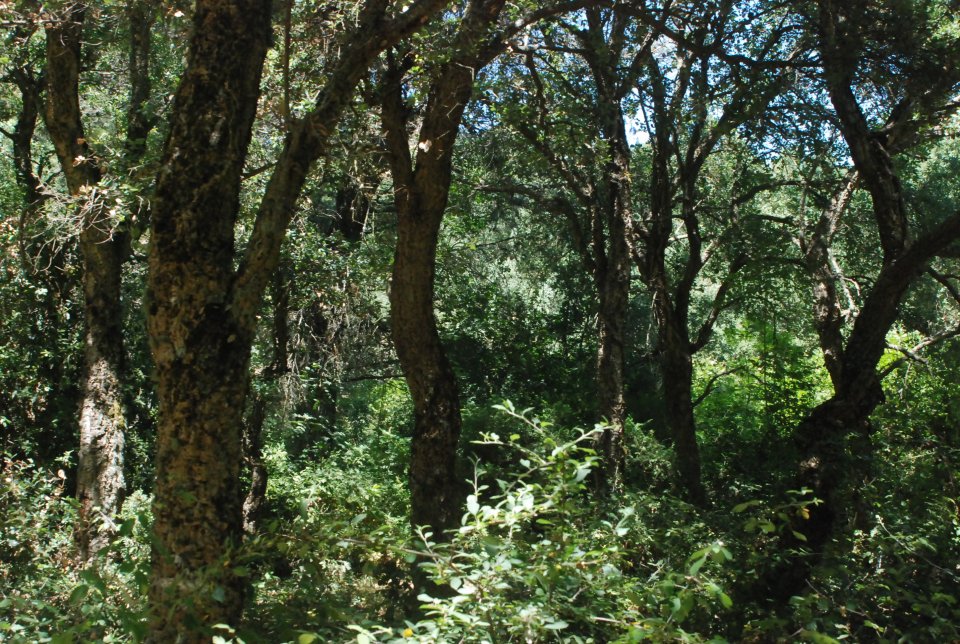
This example show cases the possibility that some private companies, interested in processing cork, wood chips and wood, take-up forest management on behalf of private or public forest owners in a new private-private or private-public business model. This ensures the conservation of largely abandoned cork oak woodlands. The agreement foresees the possibility for the processing industry to ensure the mid and long-term supply of cork.
Cork oak woodland abandonment and the lack of raw material for the processing industry are the two main problems affecting the cork sector. Cork oak woodland management by private and public forest owners has become economically unviable, leading to land abandonment. This leads to shrub encroachment and cork oak disappearance for competition with other species.
Multiple benefits can be highlighted: the reduction of fire risk by removing part of the shrubs; the reactivation of the production potential of the cork oak stand through debarking, even if the cork is not always of good quality; the production of firewood and wood chips from shrubs and branches; the improvement of cork oak tree density through planting of new cork plants; ultimately woodland restoration by increasing recruitment of the cork oak stand.
Choose companies that have experienced and fully trained personnel; when carrying out shrub clearance consider leaving small nuclei of plant species important for the local fauna (Pyrus, Crataegus, etc.) or old trees of other existing species (Quercus pubescens for example); sign agreements and contracts between the owners of the cork oak forests (or the public body) and the companies.
If the sylvicultural techniques applied are correct and done in the right period (absence of wet soils for example) there are no negative impacts. It is important that the operations are carried out by trained and experienced personnel who care about the conservation of the cork oaks in the long term. Private companies who carry out the work, must be ensured the mid or long-term economic benefits, especially when the cork oak woodlands once again become productive.
The following issues need to be further investigated: the recruitment success of planted cork oak trees; shrub regrowth: when and if to intervene with the clearance of the shrubs, to proceed with total removal or leaving residues on site; wood chip production; if and how to introduce grazing.
Tommaso La Mantia, tommaso.lamantia@unipa.it, https://www.unipa.it/persone/docenti/l/tommaso.lamantia/
Sala Giovanna, giovanna.sala@unipa.it https://www.unipa.it/
Alfonso Filippo, filippo.alfonso.92@gmail.com(https://www.syfar.com/)
Daniele Tedesco, danit91@hotmail.it (https://www.syfar.com/)
Further information
Tedesco D., 2019 - Nuove tecniche per la gestione dei sistemi agroforestali con la Sughera in Sicilia. Tesi di Laurea, Relatore La Mantia T., Laurea Magistrale in Scienze e Tecnologie Forestali e Agro-ambientali.
T. La Mantia
Shrub clearance stage (photo T. La Mantia).
